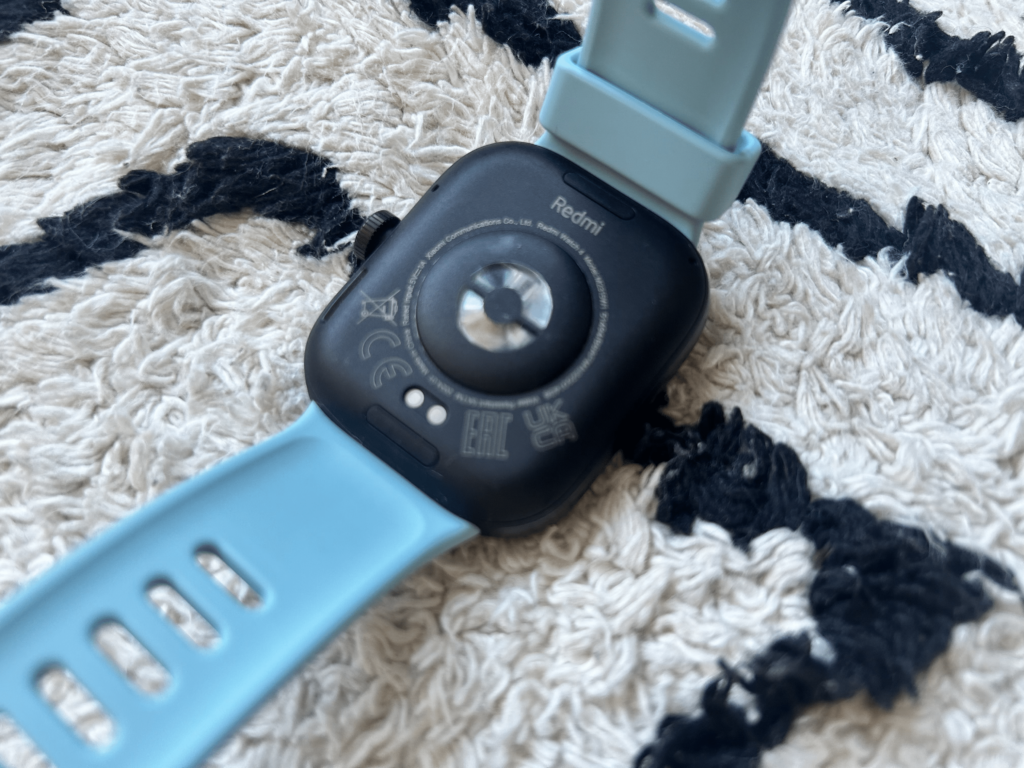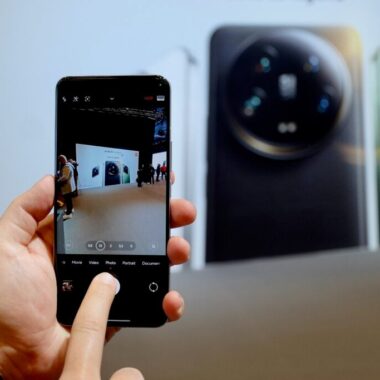Verdict
The Redmi Watch 4 is a cheap smartwatch that makes some nice design changes from its predecessor and is overall pretty likeable for something that behaves more like a fitness watch than smartwatch, though doesn’t quite outperform the similarly priced competition.
Pros
- Smooth-running watch software
- Thoughtful fitness and workout features
- Good, big screen
Cons
- Very awkward strap to put on
- Keeps to the smartwatch basics
- Heart rate tracking performance isn’t great
-
1.97-inch AMOLED displayLarge screen, with AMOLED technology too boost contrast and colour accuracy. -
Up to 20 days battery life Can last up to 20 days on single charge in typical usage mode. -
Tracks sleep, heart rate, blood oxygen and stressTracks all of the key metrics for a smartwatch to monitor your health and fitness.
Introduction
The Redmi Watch 4 is the Xiaomi sub-brand’s latest affordable smartwatch that’s aiming to offer more value for money – particularly in the looks department.
It’s ramped up the screen quality, case materials and is also making it easier to mix up the straps. There’s also promised improvements when tracking your health and wellness and it’s giving battery life a boost too.
The budget end of the smartwatch market is definitely getting more competitive, so is the Redmi Watch 4 one that impresses? Here are my thoughts.
Design and screen
- Available in two colours
- Larger AMOLED screen
- Removable straps
Redmi sticks with a square smartwatch design and the option of black or grey case colours, and the size of that case has grown quite significantly from the Watch 3.
It’s moved from a 42mm-sized case to a larger 47.5mm one. That has, however, seen a jump in case thickness going from 9.99mm to 10.5mm, so you’re swapping more screen estate for a less slender watch overall.
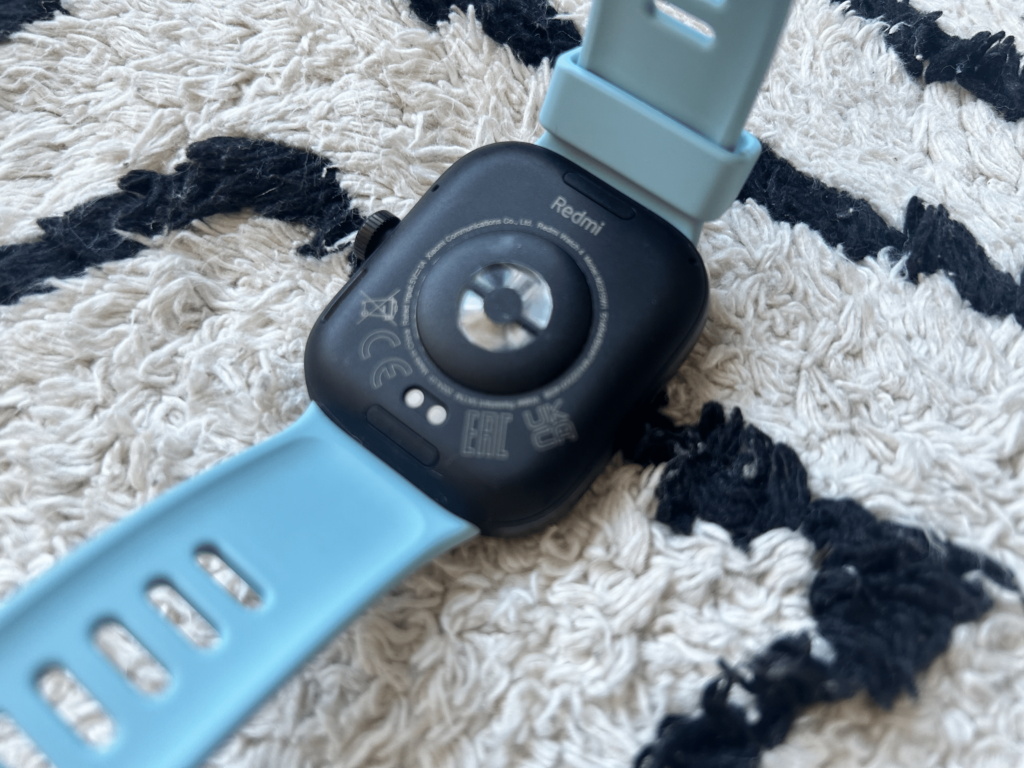

It’s heavier too, though by no means a hulking smartwatch to wear in spite of that bigger screen. Redmi also swapped plastic for aluminium to give the frame of the Watch 3 a more high-grade look. It’s still quite a minimalist, simple design, but the metal addition is welcomed here. There’s also a stainless steel watch crown that can be pressed and twisted, with haptic feedback providing extra feedback to those twists.
The case is connected to a TPU strap that’s quickly removed with a press of a button on the rear. The strap itself is one of the more awkward ones I’ve come across, largely down to the clasp mechanism, which makes it quite a stressful strap to put on. Once it’s on it doesn’t budge, but getting it on in the first place is a pain.
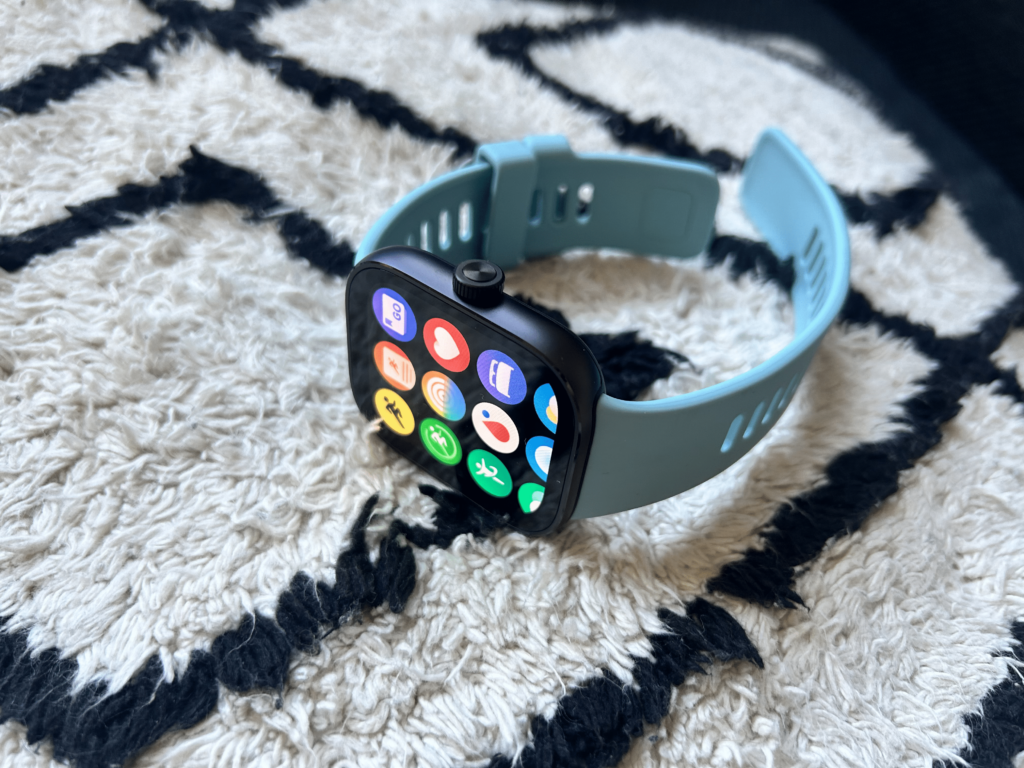

And so to that screen. It’s a 1.97-inch, 450×390 resolution AMOLED display. That’s the same resolution as the Watch 3, but now spread over a larger space. The result is a colour screen where colours are a touch saturated, though it is an extremely bright and visible screen.
It’s got a max 600 nits of brightness, so not quite as bright as Pixel Watch 2 or the Samsung Galaxy Watch 6, but it felt almost torch-like at night. There is an always-on display mode here, with Redmi promising up to 10 days battery life when you keep that screen on at all times.
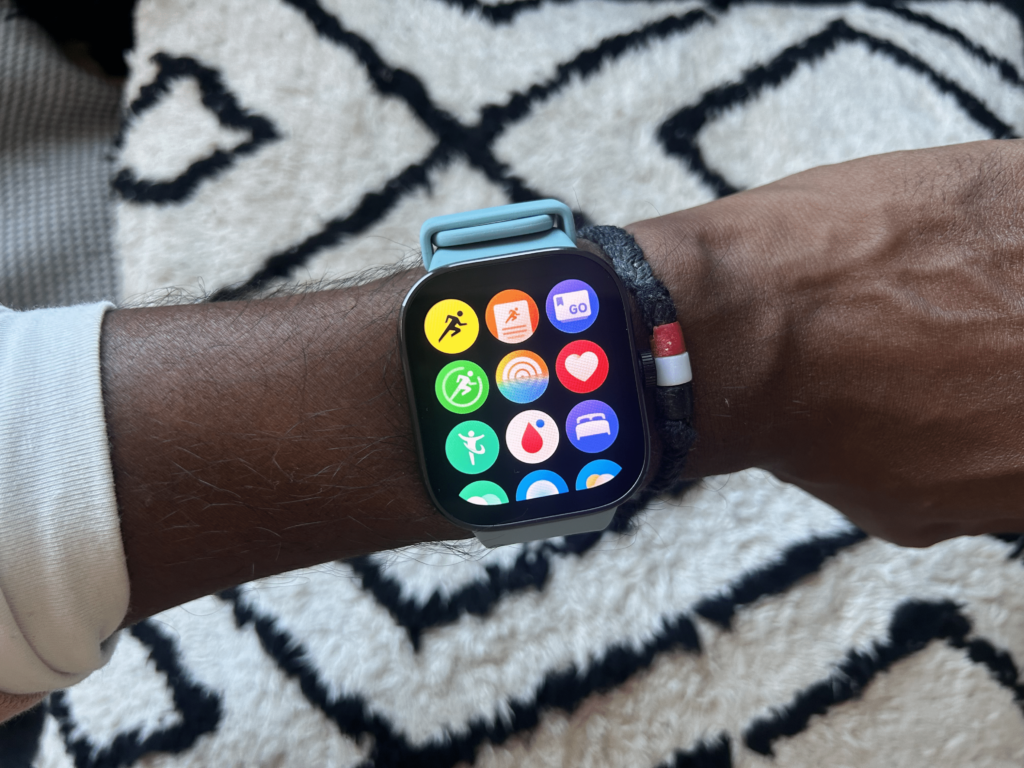

A 5ATM water resistance rating does mean it’s a smartwatch suitable for swimming. I’ve taken it for a swim in a pool and kept it on when jumping in the shower and the Redmi Watch 4 has survived the dunking and soaking.
Performance and software
- Works with Android and iOS
- Supports Bluetooth calling
- Includes built-in music player
In typical Redmi (and Xiaomi) fashion, details on the processor and internal memory aren’t shared here, but what we do know is that the Redmi Watch 4 runs on Xiaomi’s HyperOS operating system. That’s an OS that’s compatible with Android phones and iPhones and uses Xiaomi’s MiFitness companion app to get things set up and paired to your smartphone.
The MiFitness app is broken down to show your health and fitness metrics, let you track outdoor workouts, adjust watch settings and also connect it to apps that include Apple Health and Strava.
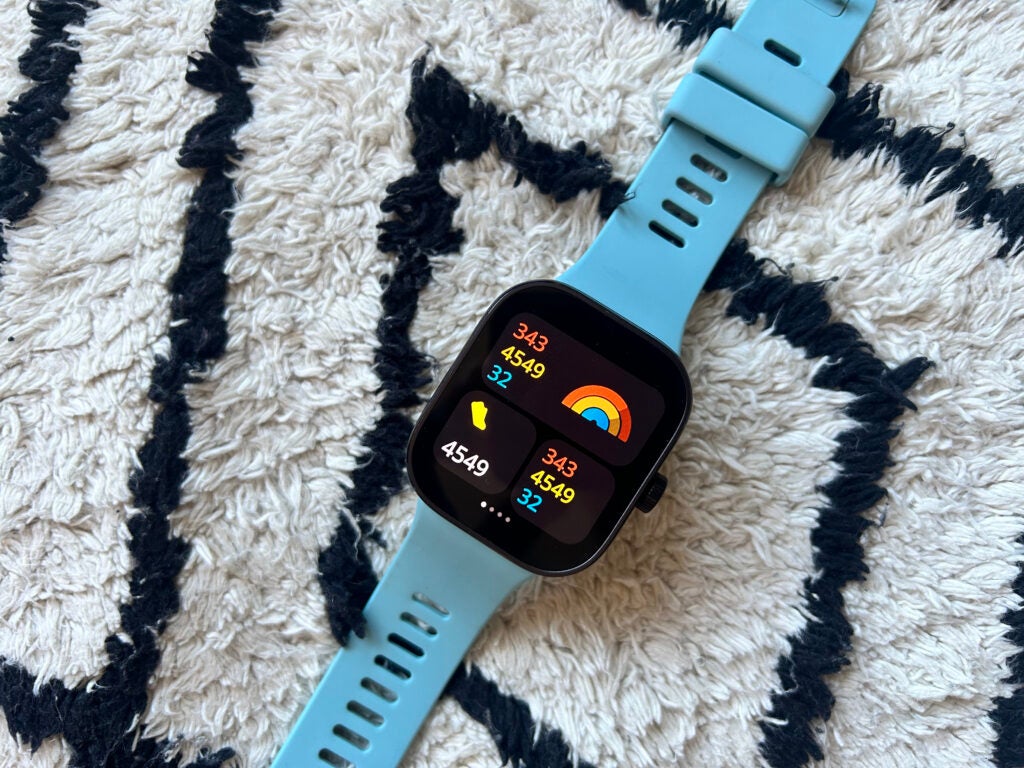

It’s a functional app, easy to get around, though not exactly the slickest-looking companion smartwatch app I’ve encountered. This is a place where you can find more watch faces, adjust the level of wellness monitoring and compete against other Redmi or Xiaomi Watch-owning friends and their activity tracking stats.
The watch OS is your pretty typical gesture-based setup. Swipe up from the main watch screen to see the quick controls, swipe down to see your notification stream or swipe left or right to see your stream of data widgets that can be customised and changed. Interacting with the software is smooth and the UI is well optimised to that larger square face.
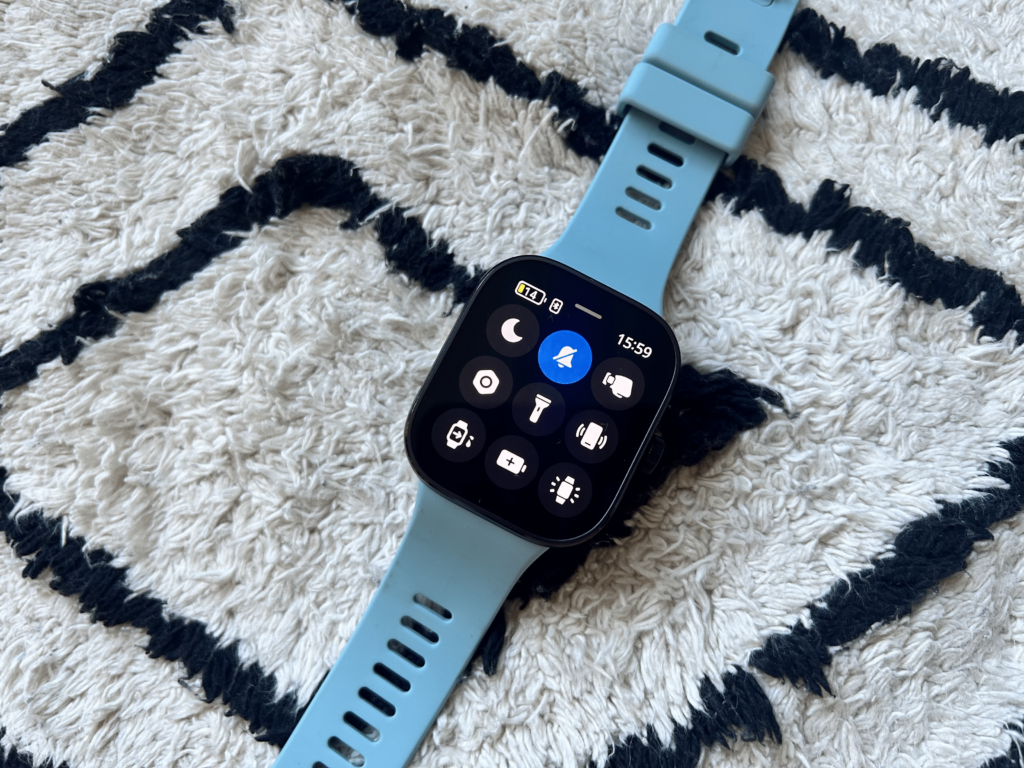

As a smartwatch, you’re getting support to view notifications, control music playback, check your calendar and there is the ability to take calls via Bluetooth thanks to the onboard speaker and microphone.
That call functionality also enables an emergency call mode where you can triple-press the watch crown to alert your emergency contact. Your phone will of course need to be nearby to make this feature a useful one.
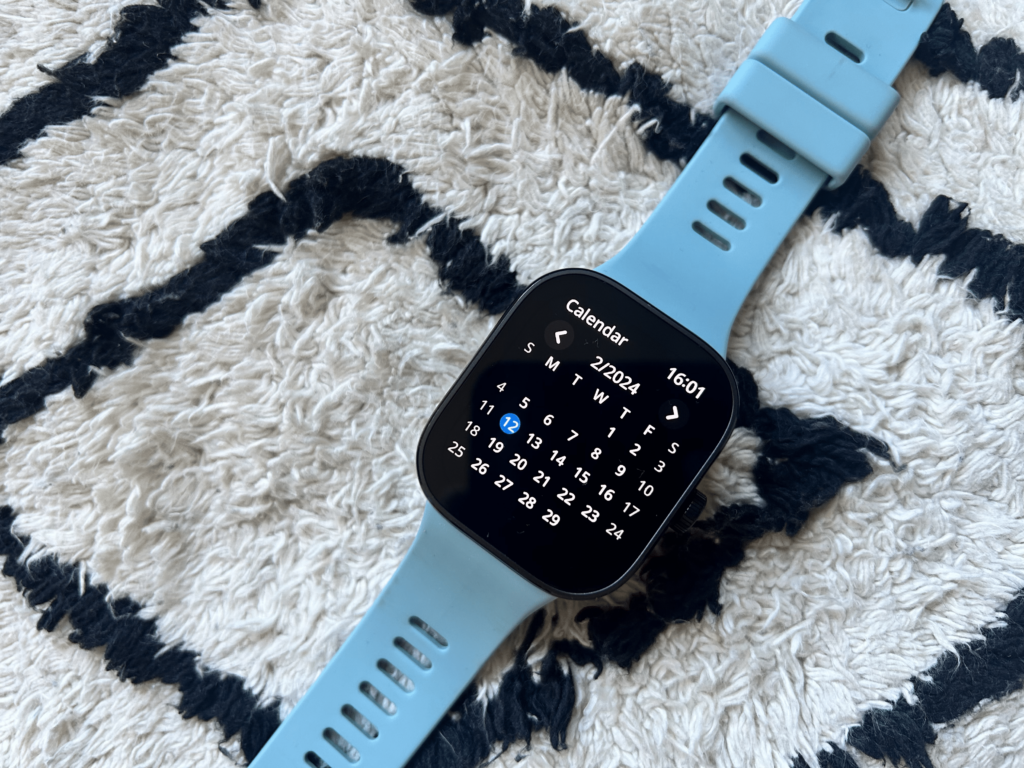

The smartwatch functionality here is on the basic side, but what does appear here works fine. Notifications don’t feel cramped on that larger screen, weather forecasts and the calendar UI are well presented and the music controls are nicely optimised too.
Tracking and features
- Upgraded optical PPG sensor
- 150+ sports profiles
- Built-in GPS
For an affordable smartwatch the Redmi Watch 4 does pack in a fair amount of features on the fitness and sports tracking front. There’s built-in GPS, so no leaning on your phone to better track outdoor workouts. This is a smartwatch that will track your heart, blood oxygen and stress. The optical sensor doing that is now a 4-channel setup designed to boost overall accuracy. If you want to share your data, Redmi offers the ability to send your stats to Apple Health, Google Fit and Strava.
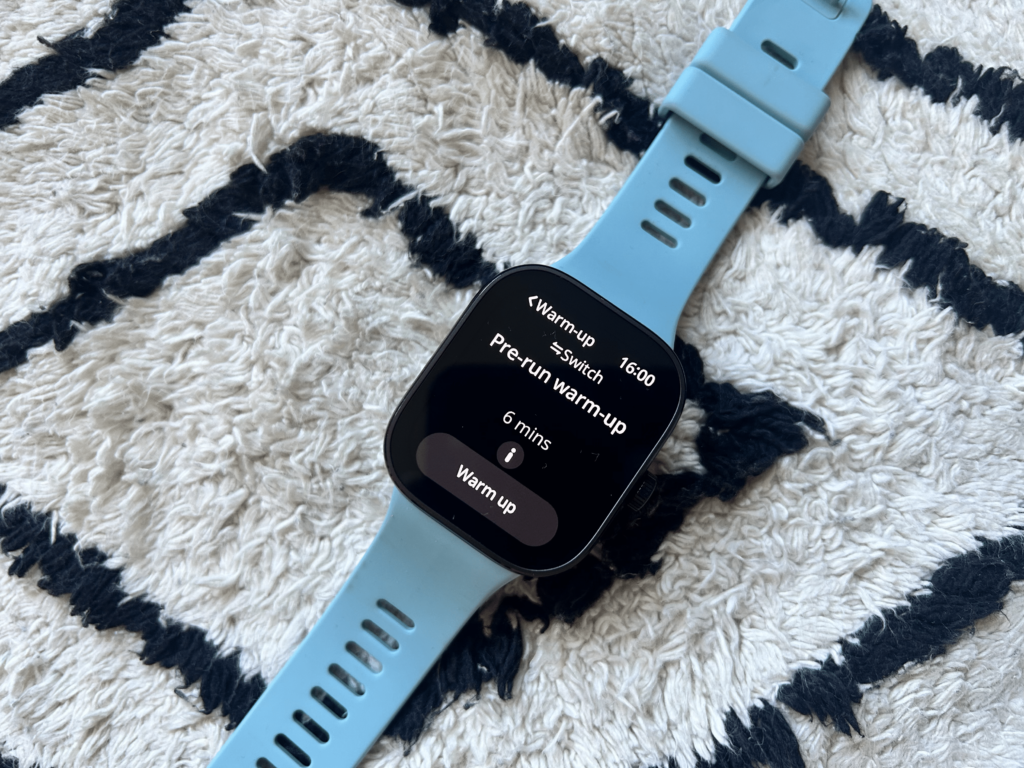

There’s a multi GNSS chipset, so not the more on-trend dual-band support we are starting to see on some smartwatches and sports watches to boost outdoor tracking accuracy. Among the 150 or so sports profiles, some include a new warm-up element to get you limber before your workout. This is something Huawei has similarly offered on some of its watches.
Redmi also offers some training insights to make sure you’re not overdoing it, while new runners can benefit from some preloaded workouts to show you what an interval session looks like.
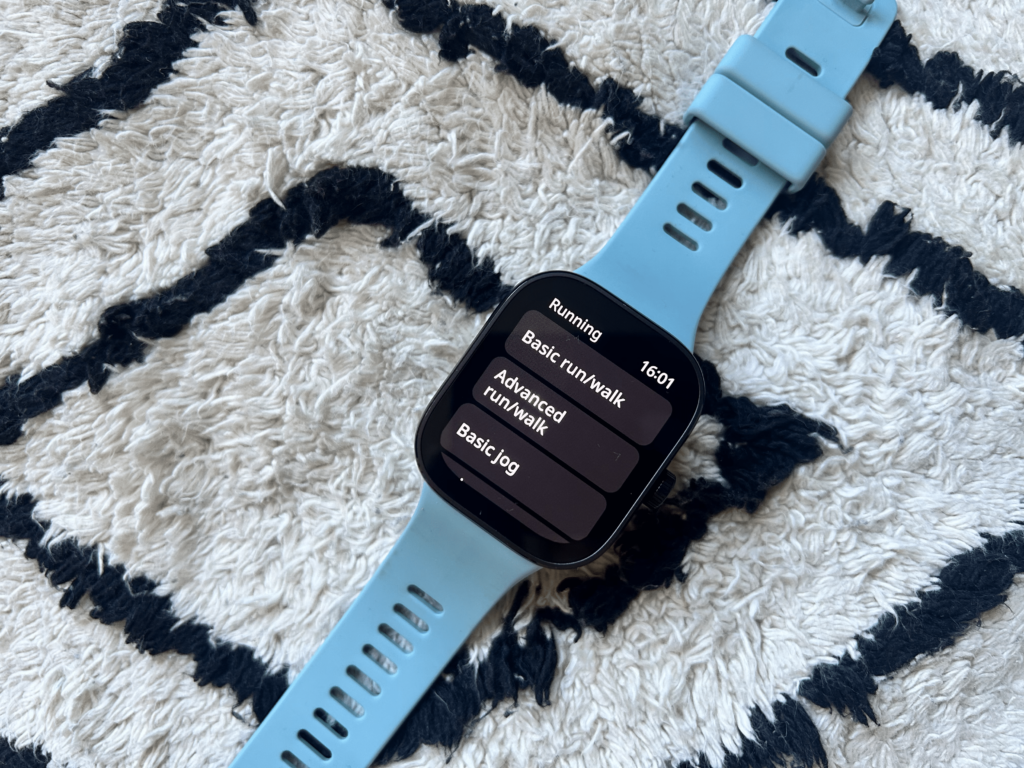

As a fitness tracker, you’ve got a nice dedicated screen and widget for that on the watch, and it’s Redmi’s take on Apple’s Move rings. Accuracy-wise, I’ve been using it against a Garmin watch and the Oura Ring Gen 3 to compare data. I found on some days that the step count totals had a difference of just 500 steps, while on other days it was closer to 1000. I never expected it to match with the other wearables, but also didn’t find the totals too wildly out. Motivation-wise, you can set up inactivity reminders, but that’s about as far as things get to nudging you to keep moving.
When you take it to bed, the Redmi Watch 4 will rate your sleep quality, and break down sleep stages, though you need to enable more detailed monitoring to capture REM sleep. It will also capture sleep heart rate and offer additional breathing scores too. Like enabling REM sleep tracking, though, adding breathing scores into the mix hits the battery life harder. When you track data for seven days, you’ll also get a designated sleep animal to help define the type of sleeper you are. This is something Samsung added to its smartwatches recently too.
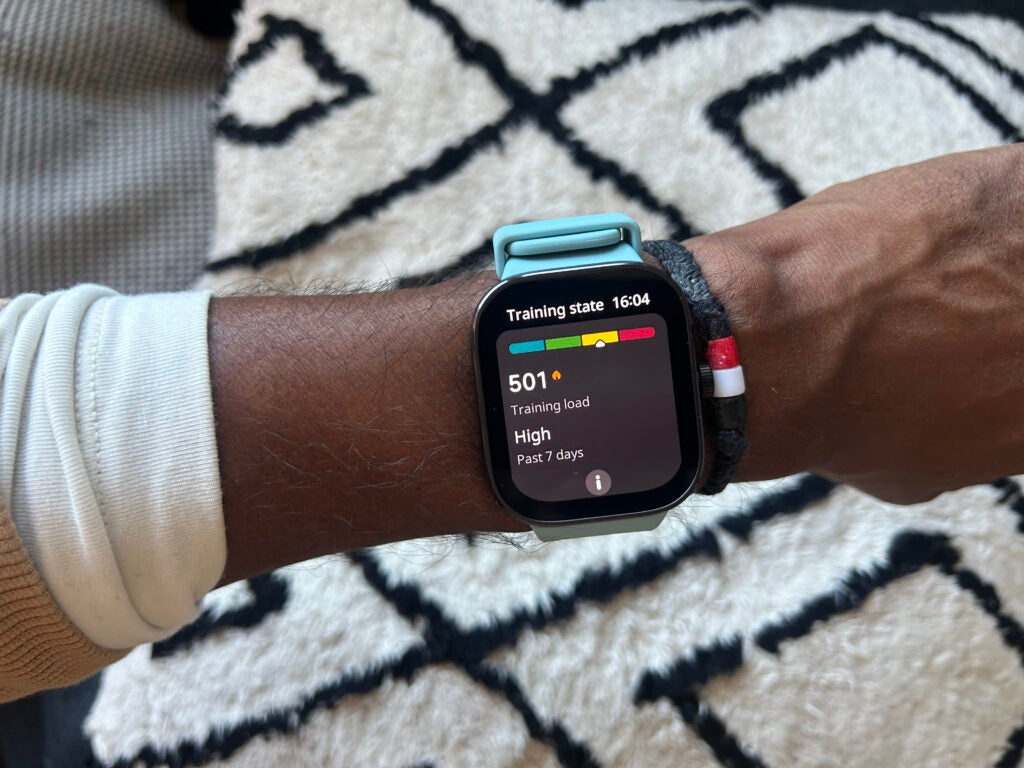

I wore the Redmi Watch 4 to bed with the Oura Ring Gen 3, one of the best sleep tracking wearables I’ve tested. I found core sleep stats like sleep duration, as well as deep and light sleep stage numbers, weren’t radically different from Oura’s data. Sleeping heart rate, however, was abnormally high. My sleep heart rate is typically in the 40 bpm range, and the Watch 4 suggested it was closer to 60-70 bpm on some nights. The sleep animal aspect adds a fun element to tracking here, while staple sleep stats feel good if some of the additional ones weren’t quite reliable for me.
When you switch to sports tracking mode, this is a watch that offers a lot and I think – like a lot of more affordable smartwatches – doesn’t quite deliver in all departments. I’ll start with that upgraded heart rate monitor, which for day-to-day heart rate monitoring reported high readings compared to the continuous tracking on a very reliable Garmin watch. During exercise, the average and maximum heart rate readings were very off from a heart rate monitor chest strap, even for pretty easy paced workouts.
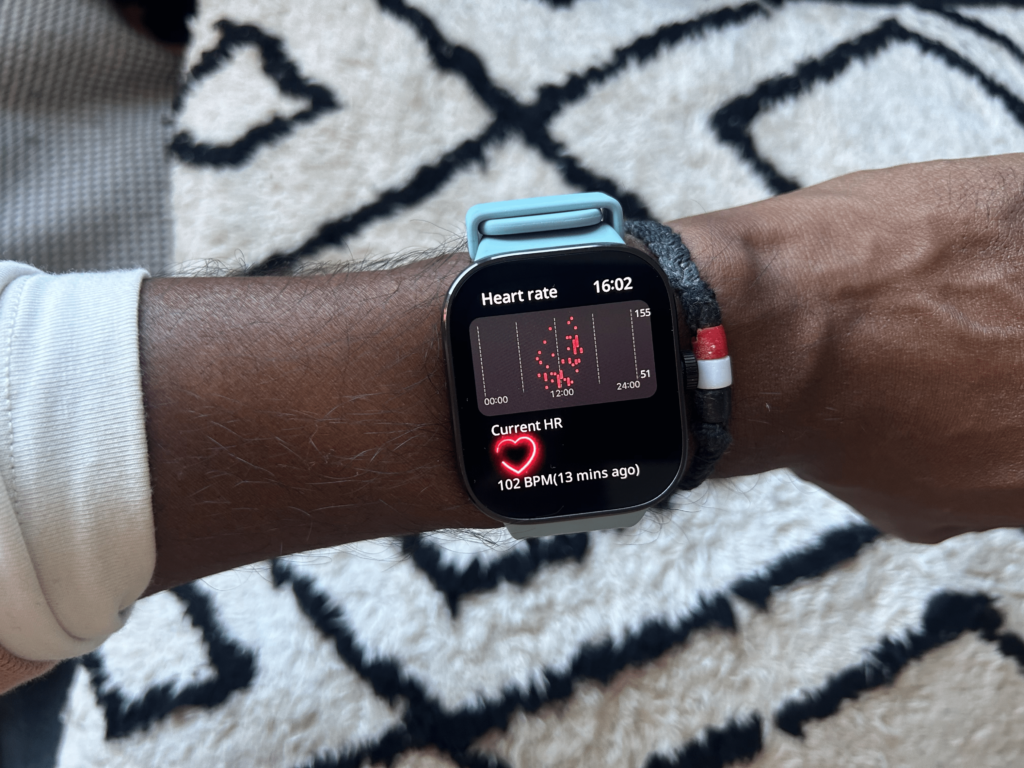

When you’re putting the GPS performance to use, I’ve found that similarly priced smartwatches from Huawei and Honor have performed better for distance tracking and nailing metrics like pace. It’s going to be fine for casual fitness fans, but you can definitely get better accuracy elsewhere. In the swimming pool it performed well for distance tracking, pace and stroke counts and were generally in line with two other swim trackers I used it against.
The question marks of the accuracy of those sensors throws doubt over some of the additional insights that Redmi promises here. Things like VO2 Max, recovery time and less so its Vitality scores are tied to tracking exercise on a regular basis, as opposed to heart rate where accuracy is definitely sketchy.
Battery life
- Up to 20 days battery life
- 10 days in always-on mode
- 30 days in long battery mode
Owning a budget smartwatch has its advantages over watches like the Apple Watch or Samsung Galaxy Watch, like enjoying bigger battery life, and that’s certainly the case here with the Redmi Watch 4.
Along with that bigger display Redmi has grown the capacity of the battery with it, moving to a larger 470mAh one. That battery promises up to 20 days in what Redmi deems typical usage. That drops to 10 days if you keep the screen on at all times, and maxes out at 30 days in a long battery mode where you’ll only be able to track steps and view the time in this mode.


The battery settings on the watch gives you an idea of the remaining battery life you have to play with, which is typically a feature you’d need to jump into the companion app to see.
As far as getting that 20 days of battery life, I’d say that number is optimistic. Wearing it all day and in bed with notifications enabled, continuous health monitoring and tracking some exercise sees the battery drop-off was on average 10%. With the screen set to always-on, the battery drop is noticeably more severe. Within 10 minutes of switching to the always-on mode, it had dropped by 5%.
As is typically the case here, what you use on a daily basis or decide to track overnight will dictate the kind of battery you’ll enjoy. It can absolutely go for a week, but to get those top numbers, you’ll need to restrict the features you use a fair bit.
Should you buy it?
You want an affordable smartwatch with a good colour screen
The Redmi Watch 4 keeps to the smartwatch basics, but does at least spread them across a big, bright colour display.
You want the best smartwatch at this price
As a package, there are definitely better options available around the same price. Check out our Best Smartwatch guide for more options.
Final Thoughts
I like what Redmi has done with the look of the Watch 4, whether it’s the bigger screen or the nicer case material that makes it feel less budget. What lies inside of that improved design is software that runs nicely, but ultimately doesn’t push the envelope in terms of what a more affordable smartwatch is capable of.
The smartwatch support remains simple, while the promised improvements in fitness and sports tracking don’t better the competition. I’d say watches like the Honor Watch 4 and the Huawei Watch 2 will give you better value for money and still give you a nice looking smartwatch as well too.
FAQs
Yes, the Redmi Watch can make calls, but only when it’s paired to your smartphone via Bluetooth. It doesn’t include any built-in cellular features to offer standalone calls.
Yes, the Redmi Watch 4 is waterproof and carries a 5 ATM rating. That means it’s suitable to be submerged in water up to 50 metres depth and does offer a swim tracking mode.

